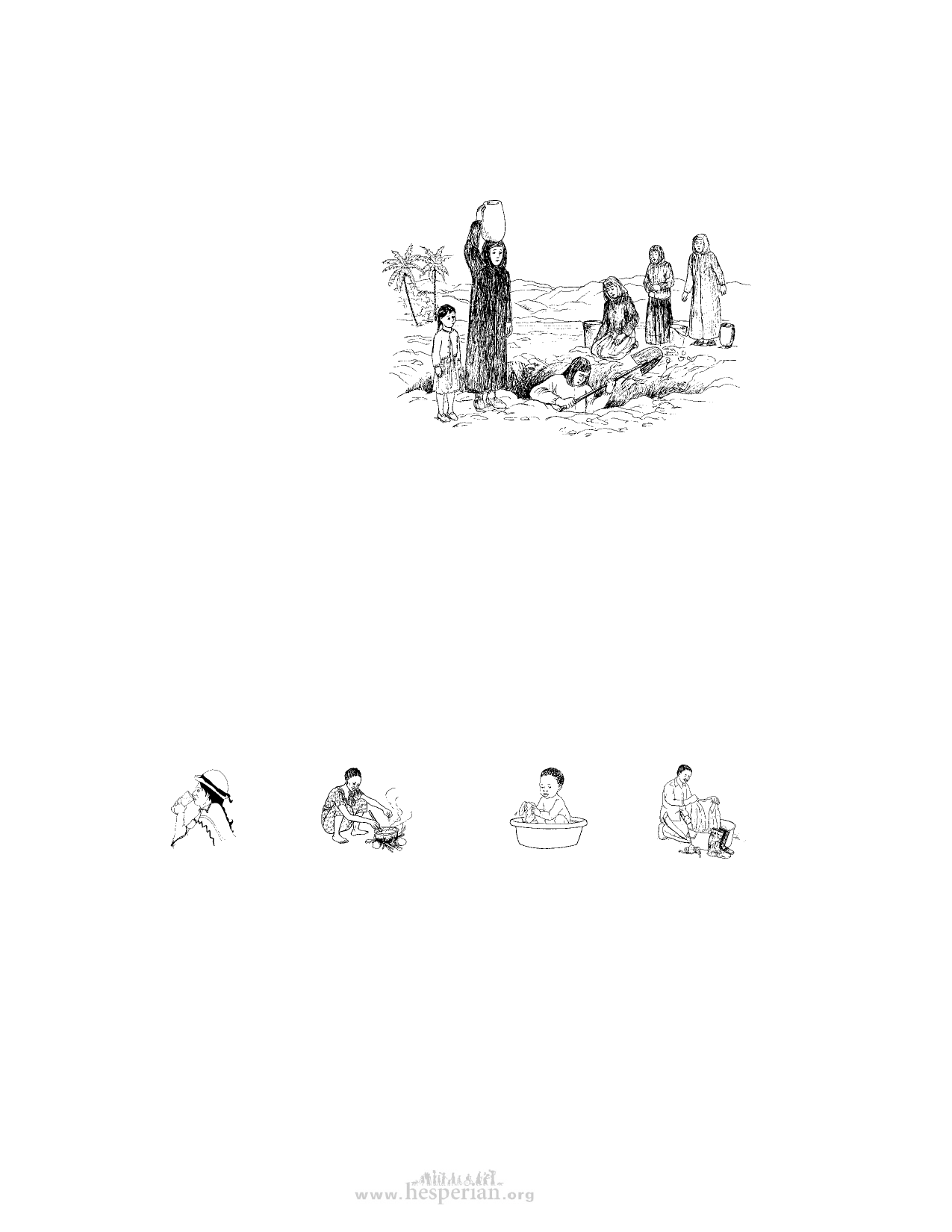
8 Water for Life
Health problems from lack of water (water scarcity)
For the people who collect and carry water — usually women and children — water
scarcity can mean traveling long distances in search of water. For farmers, water
scarcity means hunger when
drought causes crops to fail.
For children, water scarcity
can mean dehydration and
death.
In hospitals, clinics, and
other places where sick
people get care, lack of
water for washing can allow
infection to spread from
person to person. A reliable
supply of safe water can
mean the difference between
life and death.
Collecting and carrying water over long
distances causes many health problems.
Water can prevent and treat many illnesses
We need water to heal from many illnesses. Water is used to prevent and treat
diarrhea. (See the book Where There is No Doctor and the booklet Sanitation and
Cleanliness for a Healthy Environment for information on making a rehydration drink to
treat diarrhea.) Washing hands with soap and water after using the toilet and before
eating or handling food helps prevent diarrhea illnesses. If there is not enough water
for washing, there is much more risk of illness and death.
How much water do we need?
People can survive much longer without food than without water. The average amount
of water that 1 person needs for good health each day is:
1 to 3 liters
for drinking
2 to 3 liters for food
preparation and cleanup
6 to 7 liters for
personal cleanliness
4 to 6 liters
for laundry
This totals 15 to 20 liters per person per day. But many people are forced to manage
with much less. Other needs, such as sanitation, irrigation and watering livestock often
require much more water than drinking, cooking and washing.
Community places such as schools and health centers may need more than the
average amount of water used by one person in a household. Health centers, for
example, should have at least 40 to 60 liters of water per day available for every
person served.